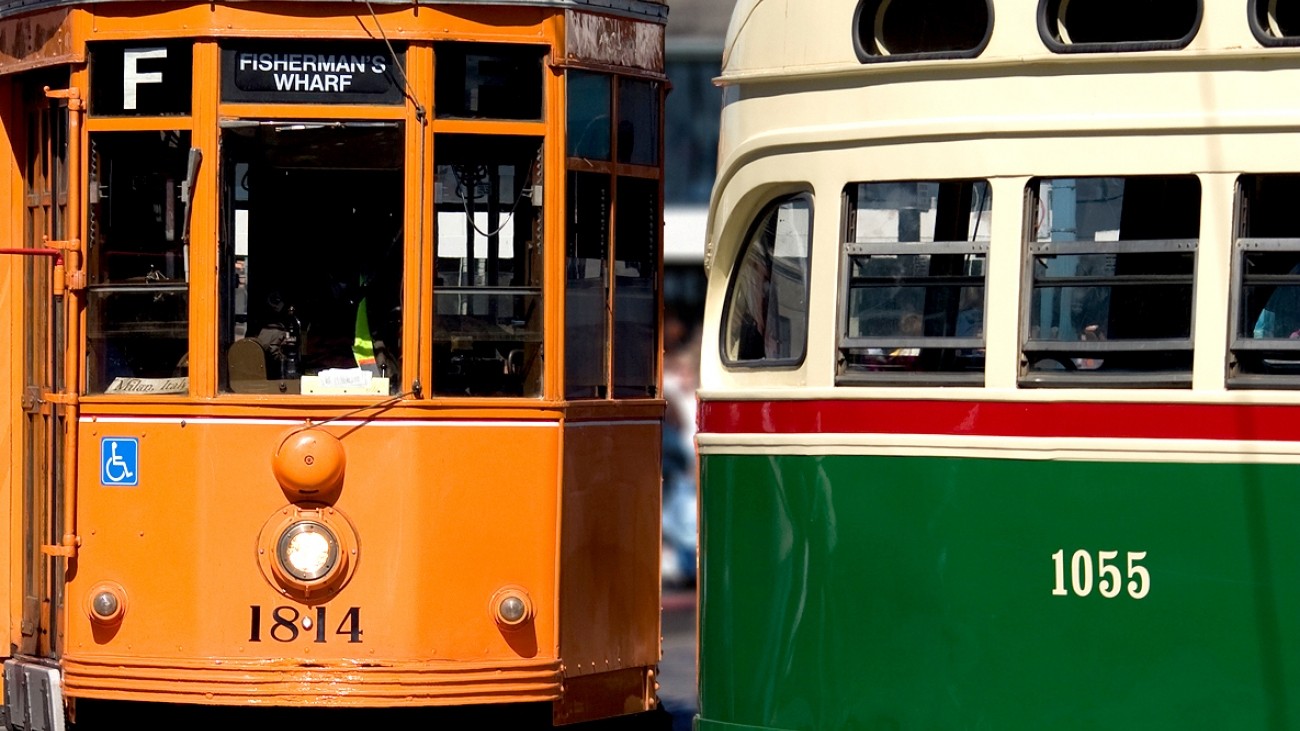
Photo: foggydave, flickr
The Transportation Funding Gap
Building, maintaining, operating, improving, and expanding a transportation system often relies on a mix of revenues from a variety of sources. In San Francisco, as in the rest of the Bay Area, local revenue sources are a substantial piece of the overall funding picture and are often matched with other federal, state, or regional dollars to maximize their impact and help fully fund projects.
San Francisco's Transportation Task Force 2045 identified a $22 billion funding gap for San Francisco's transportation systems from 2019 to 2045, a gap that will require multiple funding sources to close. Policymakers have proposed strategies to address this funding gap at the state, regional, and local levels.
The Transportation Authority will use information from the Transportation Task Force 2045 effort to develop the San Francisco Transportation Plan, our citywide, long-range investment and policy blueprint for San Francisco's multimodal transportation system. This plan is coordinated with Plan Bay Area 2050.
The Need to Fill the Transportation Funding Gap
San Francisco's economy has been booming since 2010, with tremendous residential and employment growth.
More residents: San Francisco's population increased by nearly 80,000 new residents between 2010 and 2018, a 9% increase.
More jobs: San Francisco gained over 128,000 new jobs between 2010 and 2018, a 29% increase.
These trends are projected to continue: by 2040, San Francisco is forecasted to add an additional 73,400 housing units to accommodate the city's growing population. The city will also add 275,000 jobs, many of which will be in new office space, maintaining San Francisco's position as the major jobs center of the region.
This growth is putting a strain on our transportation system, as more trips are being made across the city.
Our Transportation System is Linked to our Quality of Life
An equitable, affordable transportation system requires easy access to walking, biking, and transit options. This includes affordable transit fare programs like free Muni for youth, seniors, and people with disabilities and transit passes like San Francisco State University's Gator Pass program.
Economic competitiveness requires a wide range of safe and reliable travel options. All modes of travel—walking, biking, driving, and taking transit—rely on smooth and safely designed roads. We must address transit capacity issues. Infrastructure improvements are also needed to keep pace with the city's rapidly growing population and job market.
Safe and healthy neighborhoods require dependable transit access, at all times of day, and quality walking and biking infrastructure.
A healthy environment requires easy access to sustainable transportation options and strategies that reduce vehicle miles traveled in order to reduce greenhouse gas emissions.
It is essential that San Francisco meet these transportation challenges to improve the overall livability and affordability of the city.
More Information
San Francisco Transportation 2045 Task Force Report, 2018 (PDF)
Regional Measure 3 Bridge Toll Ballot Measure (2018)
Regional Measure 3 is a $4.45 billion traffic relief and transit improvement program funded by increased bridge tolls on the Bay Area's seven state-owned toll bridges (all toll-bridges except the Golden Gate Bridge). Residents in San Francisco and other Bay Area counties voted to approve this measure in the June 5, 2018 election.
Regional Measure 3 projects will be paid for through a $1 increase in tolls on the Bay Area’s seven state-owned toll bridges beginning Jan. 1, 2019, followed by a $1 increase in January 2022 and another $1 increase in January 2025.
The Transportation Authority is working with partner agencies in San Francisco to ensure that projects are ready for funding allocations once pending litigation challenging RM3 and its authorizing legislation (SB 595) is resolved.
Resources
Projects and Programs Benefiting San Francisco (PDF)
Frequently Asked Questions (PDF)
Expenditure Plan and Map of Projects (PDF)
Senate Bill 1 Road Repair and Accountability Act (2017)
Senate Bill 1, the Road Repair and Accountability Act of 2017, was signed into law on April 28, 2017.
Senate Bill 1 supports transportation improvements across California with a combination of gas taxes and vehicle registration fees. Investments are split between state-maintained transportation infrastructure and local transportation priorities.
Revenues established by Senate Bill 1 cannot be diverted to other uses and must remain dedicated to the transportation programs listed in the legislation. On November 6th, 2018, California voters rejected Proposition 6, preserving Senate Bill 1 revenues for local road repair and transit projects.
The federal gas tax was last raised in 1993. Since then thirty-eight states, including California, have passed legislation to raise their own state gas taxes.
How Senate Bill 1 benefits San Francisco
Senate Bill 1 provides San Francisco with over $60 million per year to repave and maintain our roads, maintain and upgrade our rail infrastructure, and increase Muni service on our city's most crowded lines.
Senate Bill 1 also provides funding for statewide competitive grant programs. San Francisco has already received Senate Bill 1 grants for projects to make biking and walking safer, and to purchase new Muni light rail vehicles and buses. San Francisco will also benefit from new BART cars and new Caltrain locomotives purchased from Senate Bill 1 funds.